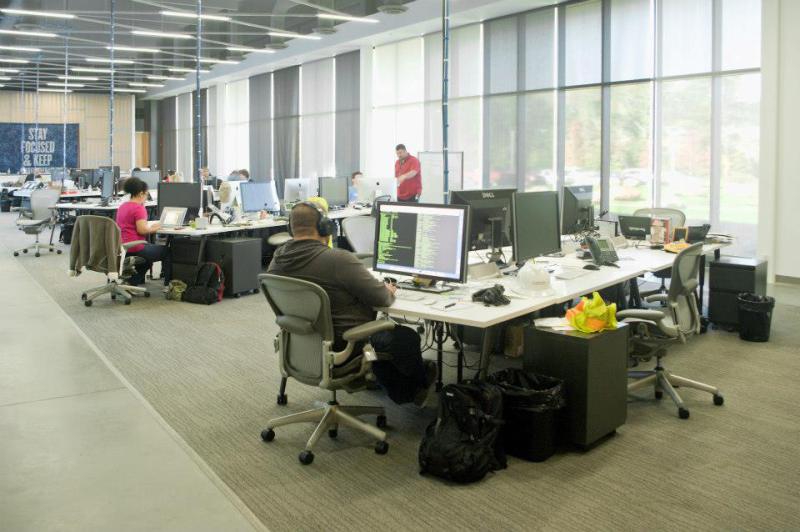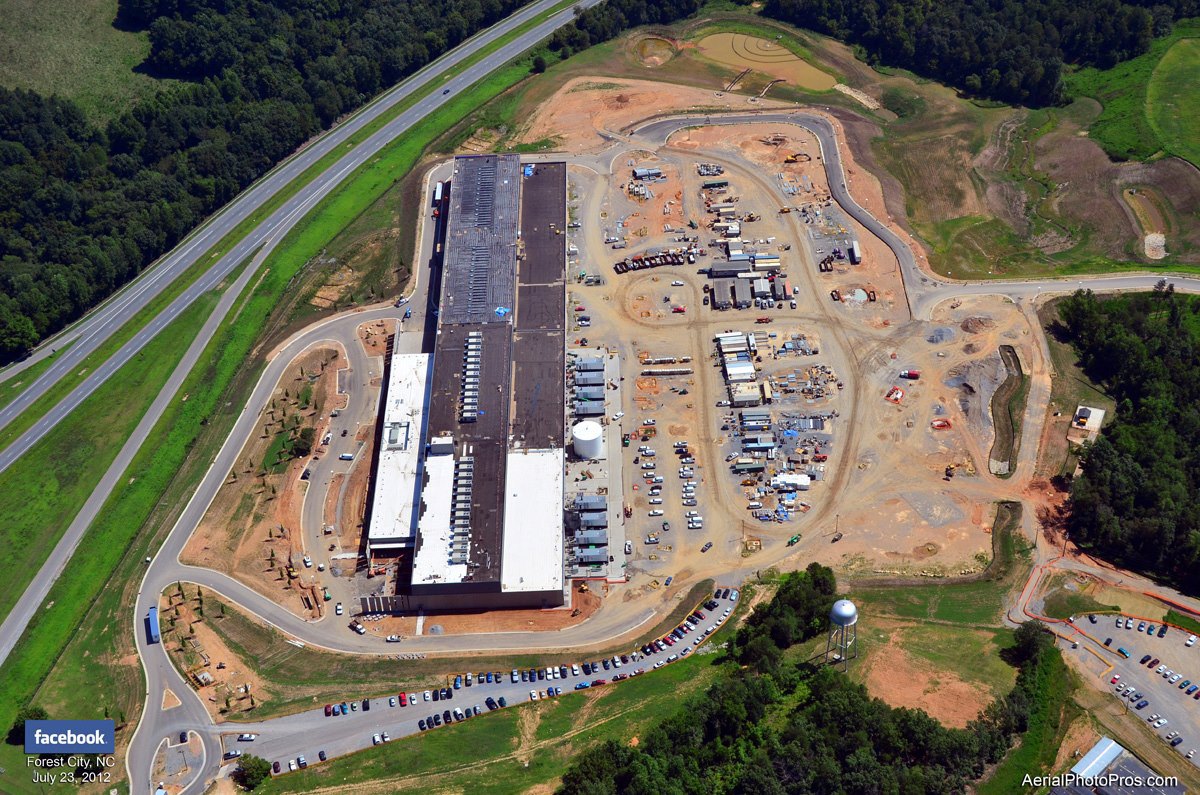Forest City, N.C., was once known as Burnt Chimney. But smokestacks are definitely a thing of the past, thanks to the social media giant Facebook, which is investing another $200 million to expand its data center campus there with a third, 480,000-sf building.
Construction reportedly is underway in Forest City, which lies between Asheville, N.C., and Greenville, S.C.
In a blog he posted on Facebook, Keven McCammon, the data center’s site manager, said that construction would add to a project that already has created “thousands of jobs in the regional economy and millions of dollars in economic impact.”
There’s no question that Facebook’s presence has been a boon to Forest City and its 7,400 local residents. The company invested $450 million into the first two buildings that each span 300,000 sf. RTI International, a firm Facebook retained to measure its economic impact, found that between 2011 and 2013 the data center had generated a total gross economic impact of $707 million and supported 5,000 jobs in North Carolina.
And since 2011, Facebook has awarded an estimated $575,000 to schools and qualified nonprofits in Rutherford County, where Forest City is located. Facebook recently agreed to support a pilot program to provide free WiFi access to 75 to 100 students in the local school district.
 Office space at Facebook's data center in Forest City.
Office space at Facebook's data center in Forest City.
Facebook, along with other tech companies, has favored North Carolina for its data center because of the state’s low-cost, reliable and available power, relatively inexpensive land, available water (at Forest City, Facebook is deploying evaporative cooling, which requires mist spray to cool the air as it enters the facility), proximity to East Coast customers, and generous tax incentives.
In June, Facebook announced plans to build a third data center on its campus in Altoona, Iowa, where its first data center there was already operational and a second was under construction. One month later, it broke ground on construction of a data center in Fort Worth, Texas, for which the company will invest $500 million in three 250,000-sf buildings. That data center, when it opens next year, will be powered entirely by wind power.
Facebook was the recipient of a $146.7 million incentive package from Fort Worth to locate its data center there. The Associated Press reports that state governments across the country over the past decade have extended nearly $1.5 billion in tax incentives to hundreds of data center projects initiated by various tech companies.
Facebook also has data centers in Pineville, Ore., and Lulea, Sweden.
Related Stories
AEC Innovators | Feb 28, 2024
How Suffolk Construction identifies ConTech and PropTech startups for investment, adoption
Contractor giant Suffolk Construction has invested in 27 ConTech and PropTech companies since 2019 through its Suffolk Technologies venture capital firm. Parker Mundt, Suffolk Technologies’ Vice President–Platforms, recently spoke with Building Design+Construction about his company’s investment strategy.
AEC Tech | Jan 24, 2024
4 ways AEC firms can benefit from digital transformation
While going digital might seem like a playground solely for industry giants, the truth is that any company can benefit from the power of technology.
AEC Tech | Jan 8, 2024
What's driving the surge of digital transformation in AEC today?
For centuries, the AEC industry has clung to traditional methods and legacy processes—seated patterns that have bred resistance to change. This has made the adoption of new technologies a slow and hesitant process.
Digital Twin | Jul 31, 2023
Creating the foundation for a Digital Twin
Aligning the BIM model with the owner’s asset management system is the crucial first step in creating a Digital Twin. By following these guidelines, organizations can harness the power of Digital Twins to optimize facility management, maintenance planning, and decision-making throughout the building’s lifecycle.
Digital Twin | Jul 17, 2023
Unlocking the power of digital twins: Maximizing success with OKRs
To effectively capitalize on digital twin technology, owners can align their efforts using objectives and key results (OKRs).
Office Buildings | Jun 5, 2023
Office design in the era of Gen Z, AI, and the metaverse
HOK workplace and interior design experts Kay Sargent and Tom Polucci share how the hybrid office is evolving in the era of artificial intelligence, Gen Z, and the metaverse.
AEC Tech | May 9, 2023
4 insights on building product manufacturers getting ‘smart’
Overall, half of building product manufacturers plan to invest in one or more areas of technology in the next three years.
BIM and Information Technology | May 8, 2023
BIM Council seeks public comments on BIM Standard-US Version 4
The Building Information Management (BIM) Council is seeking public comment on an updated national BIM standard. NBIMS-US V4 has been three years in the making and is scheduled to be released this fall.
Digital Twin | May 8, 2023
What AEC professionals should know about digital twins
A growing number of AEC firms and building owners are finding value in implementing digital twins to unify design, construction, and operational data.
BIM and Information Technology | May 8, 2023
3 ways computational tools empower better decision-making
NBBJ explores three opportunities for the use of computational tools in urban planning projects.

















